

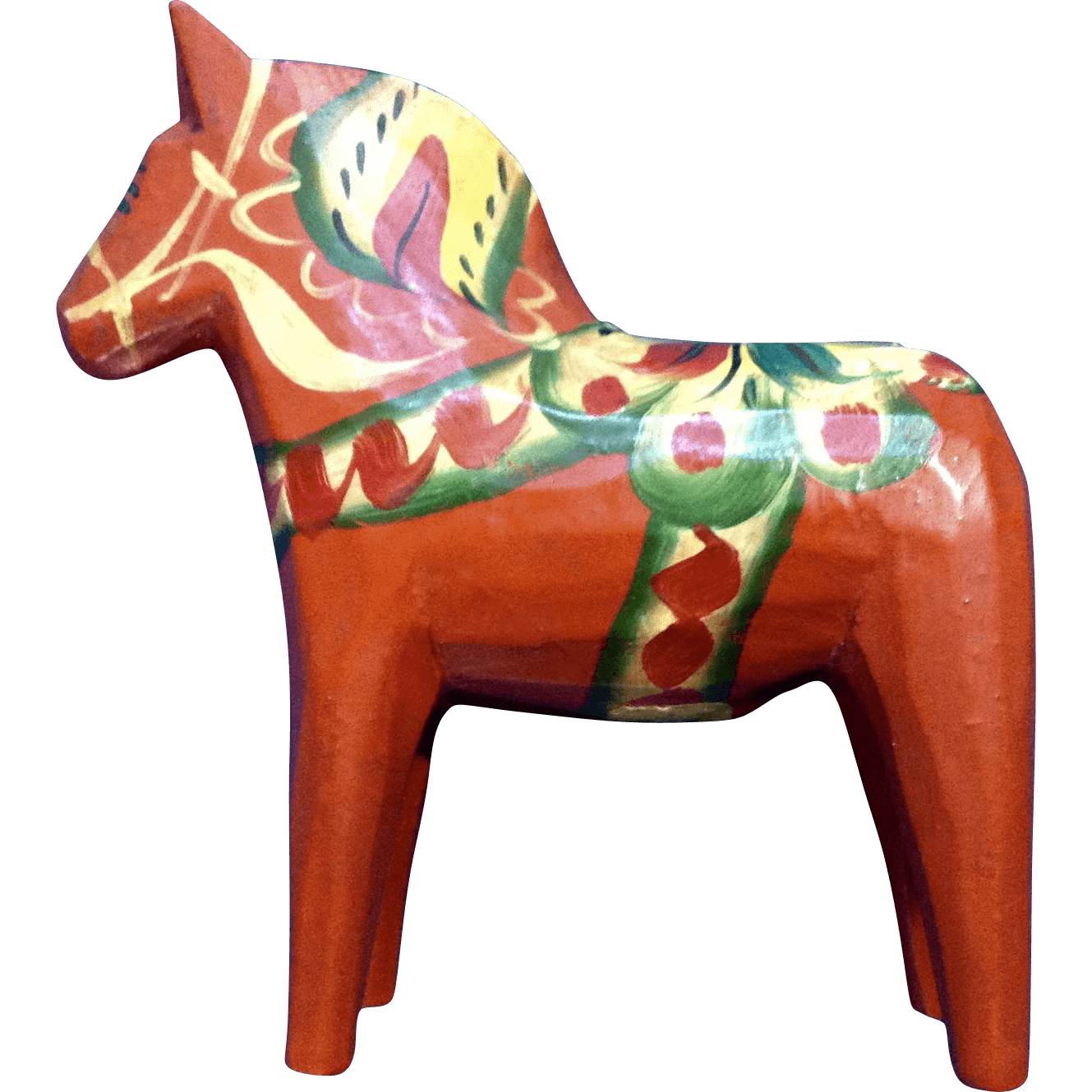
I traveled to Malmö for an independent study in Visual Culture. Located along the southern coast of Sweden, the city is a train ride away from Denmark. I visited Sweden for several reasons - university connections, Swedish heritage, and a chance experience Scandanavian culture.
I set out to examine the culture, ethnicity, languages, traditions, policies and histories that interact in the production of the visual experience. I approached the campus of Malmö University and the city of Malmö and their various urban spatial forms as image experiences, subject to interpretative strategies and the influence of other discourses. I traversed the well-traveled and the unbeaten paths, participating in and interrogating a wide range of our campus’ and city’s treasures and embarrassments, secrets and norms. In addition to these field trips, I read literature on cultural studies, as well visiting centers for culture curation.
To truly invest myself within the city, I followed the advice of author Walker Percy and left the typical tourist track. The only true way to experience a new place is with the guidance of locals. Thus, to begin my journey, I met with Staffan Schmidt of Malmö University, a professor in the field of sustainability.
Dr. Schmidt and I contrasted Sweden and the United States, revealing cultural differences in how both nations impact global sustainability. The States focus on hasty, forward movement and forget reflection - here public services are pitiful, the streets belong to automobiles, waste and pollution are rampant, and finding fresh food is near impossible. Sweden instead operates entirely different. By focusing on a collective effort to better citizens lives the Scandinavian country has created an environment friendly for all. Unlike the individualistic demands of the USA, Malmö is replacing the need for products with services.
"You don't need a drill -
you need a hole."
Professor Schmidt offered this profound quote to highlight a core concept within Malmö.
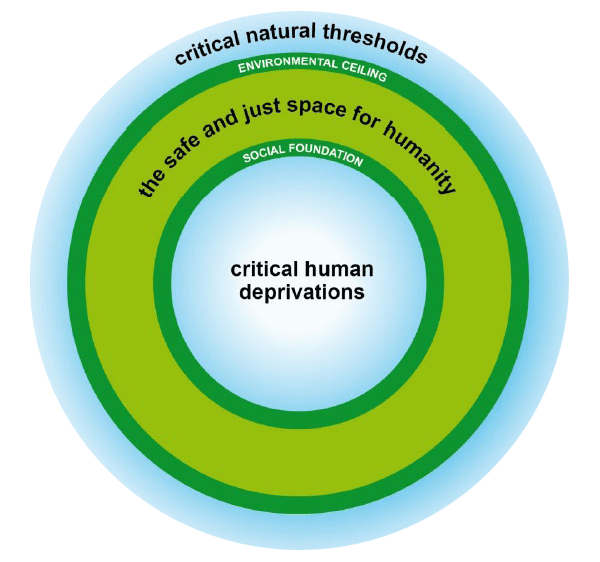
Essential features of sustainability include reducing of waste and the reusing material goods. Malmö is following this principle by removing the need for individual ownership and and, instead, offering shared services. This allows a task, such as drilling a hole into a wall, to be completed with less waste by simply sharing tools already in existence.
The mantra of reduce, reuse, recycle helps form what Prof. Schmidt has called the donut of sustainability. Schmidt explained that for humanity to continue to thrive on Earth humans (1) must have a social foundation to prevent deprivation & inequality and (2) a limit on our environmental impact. People must be able to afford a comfortable life whilst preserving resources to lessen harm caused to the planet.
Only by staying in the safe region can humans save Earth - and themselves!
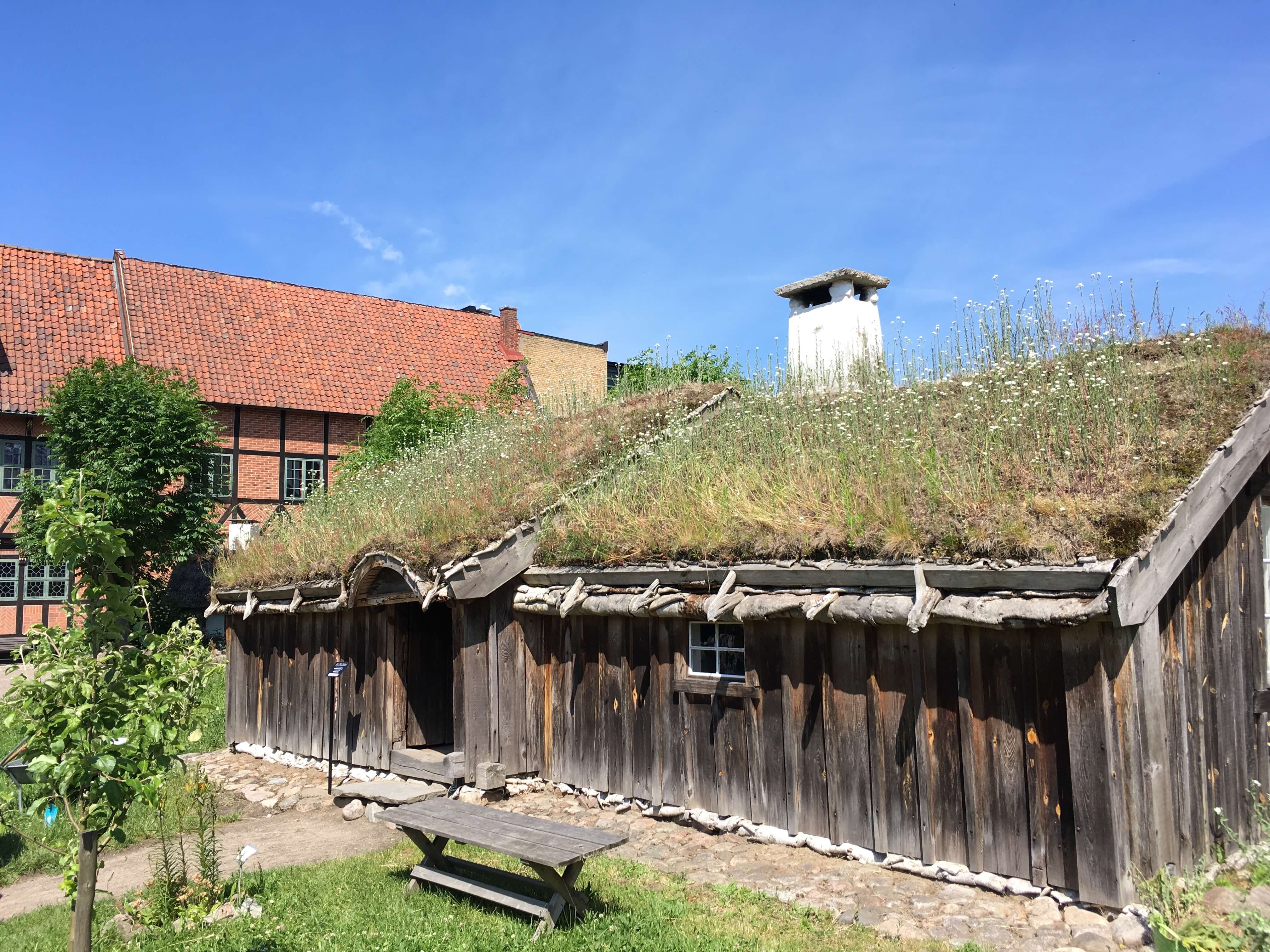
Malmö embodies the design of Schmidt's donut model. The city has entered the new age of sustainability - and with it a new standard of living.
Green roofs, efficient public transportation, abundant bicycle lanes, maintained roads and sidewalks, proper waste disposal, community composts, and countless recycle bins constitutes both the foundation for Malmö's safe space and its environmental ceiling.
By moving from products to pure services the production of visual culture within the Swedish city has been altered. Services have changed how people interact with their city and with how the city fosters a sustainable relationship with the people.
As I traversed the unbeaten paths I encountered this phenomena frequently.
This community bike storage lies nestled among residential buildings.
It saves property space, allows easy access to transportation, and reduces vehicle traffic.
Bicycles aren't just a recreational tool - they are integral components in daily life.
Bikes have become a primary mode of transportation within the sustainable culture. In the heart of Malmö the amount of bicyclists seem to overwhelm that of cars. During the 5:00pm rush hour bike paths become highways of whizzing bikes, dinging bells, and gridlocked intersections.
Never before had I seen so much bicycle traffic! The whirlwind of excitement called out to me and I eagerly answered. I hopped on the nearest rental bike and joined the fray of pedals and gears.
The developing city of Hyllie - a link between Sweden and Denmark - has become a shining example of Sweden's collective effort to convert empty land into a promising future.
Hyllie is becoming an extension of Malmö's culture, advancing the sustainable culture to new levels. The Emporia shopping mall, a main feature of the city, pushes the limit to what modern, commercial buildings can accomplish.
Emporia doubles as both a shopping center and sustainable space. The roof is completely covered in green vegetation and dotted in pathways and benches to allow visitors the chance to sit and enjoy the scenery. Across from the mall lies rows of freshly built apartments covered in green roofing. Courtyards intertwine the complexes with intricate landscaping and communal composting. All together the residential buildings are green from top to bottom.
This "environmental refurbishing" that Hyllie is practicing extends into the Malmö as well.
The Western Harbor: Another example of the revitalization of Old Industry into a Humanitarian Space. The docks from the past days of importing have been converted into modern residential living.
The progressive policies of southern Sweden have created a culture of sustainability where Art imitates Life and Life imitates Art.
Sweden brings humanity to the realm of visual culture. The culture of a city is celebrated not just within the confines of gallery space but in the streets as well. Graffiti - where it was once seen as a crime done in urban shadows - is instead celebrated for its artistic expression. Beautiful tags are met with joy, not anger! They city's love of street art is just one part of Sweden's visual effect.
Walking down the cobblestone streets, visiting vendors in the square, observing the walls lined with aerosol art, feeling the breeze from passing bicyclists, taking in the delicious smells from cafes, and watching the beautiful people go about their day are key elements in the visual experience.
Across Malmö and its neighboring cities the citizens are engaged in the harmonious cycle of life between the environment and the inventions of man. Their cumulative desire for equilibrium has inspired art pieces, created festivals to celebrate life, and allowed a vocal expression of current societal issues.
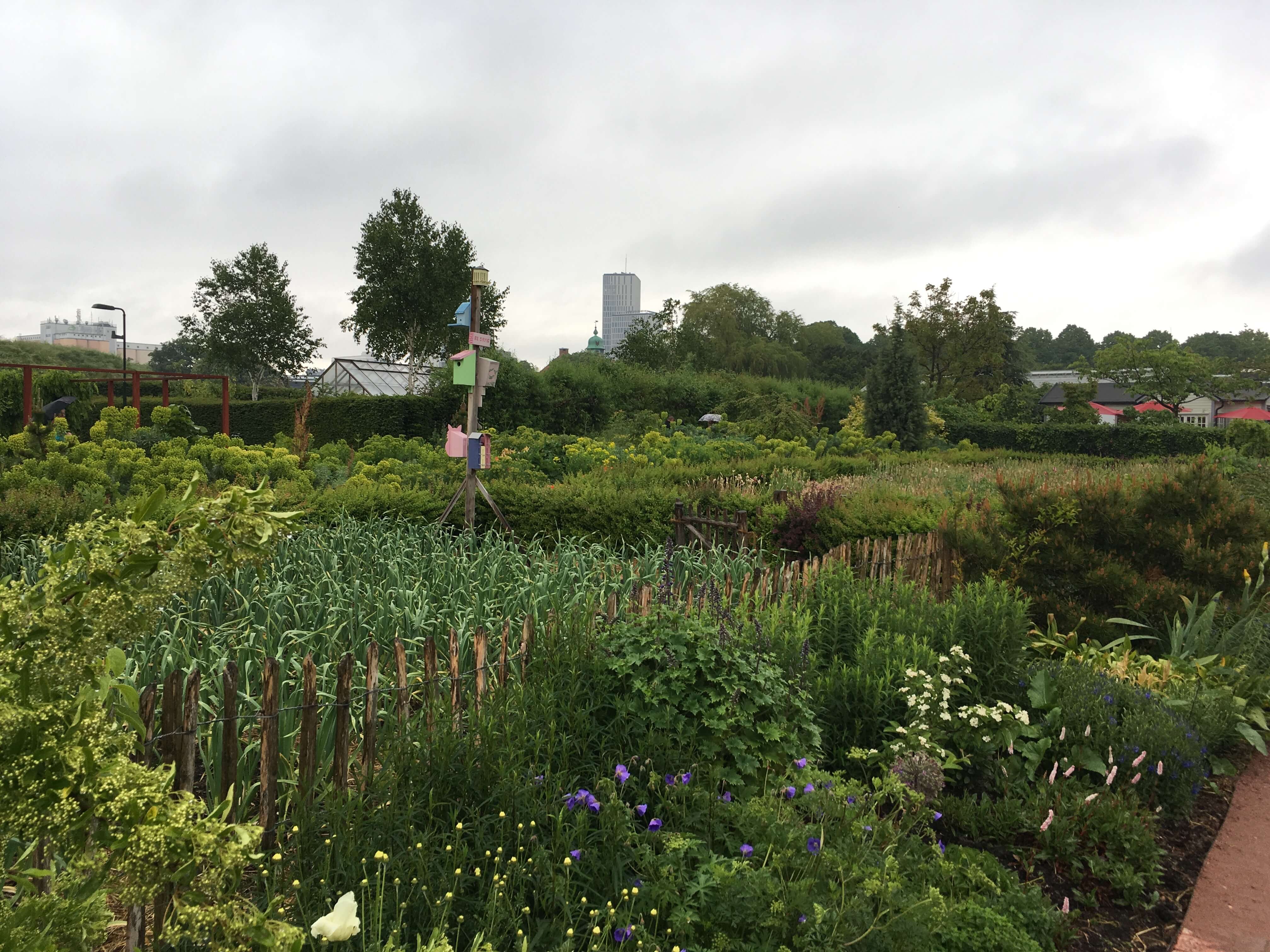
The Allotment Garden, nestled within the Slottsträdgården park, is a ornate display of flora and greenery created solely by public. Individuals own separate parcels in the Garden plot and the creativity brought to each part is the work of a unique imagination. The community comes together to grow a marvelous array of plants, flowers, and shrubs. Each piece symbolizes the individual efforts required for a collective presentation.
Summer festivals invite the city residents to come together to celebrate their way of life. The events sprawl across city blocks and turn simple parks into elaborate extravaganzas! Music plays far and wide as people flock to the party. Wildly different smells waft through the event. Each vendor offers a small slice of local delicacies. It is a flight of musical and edible culture!
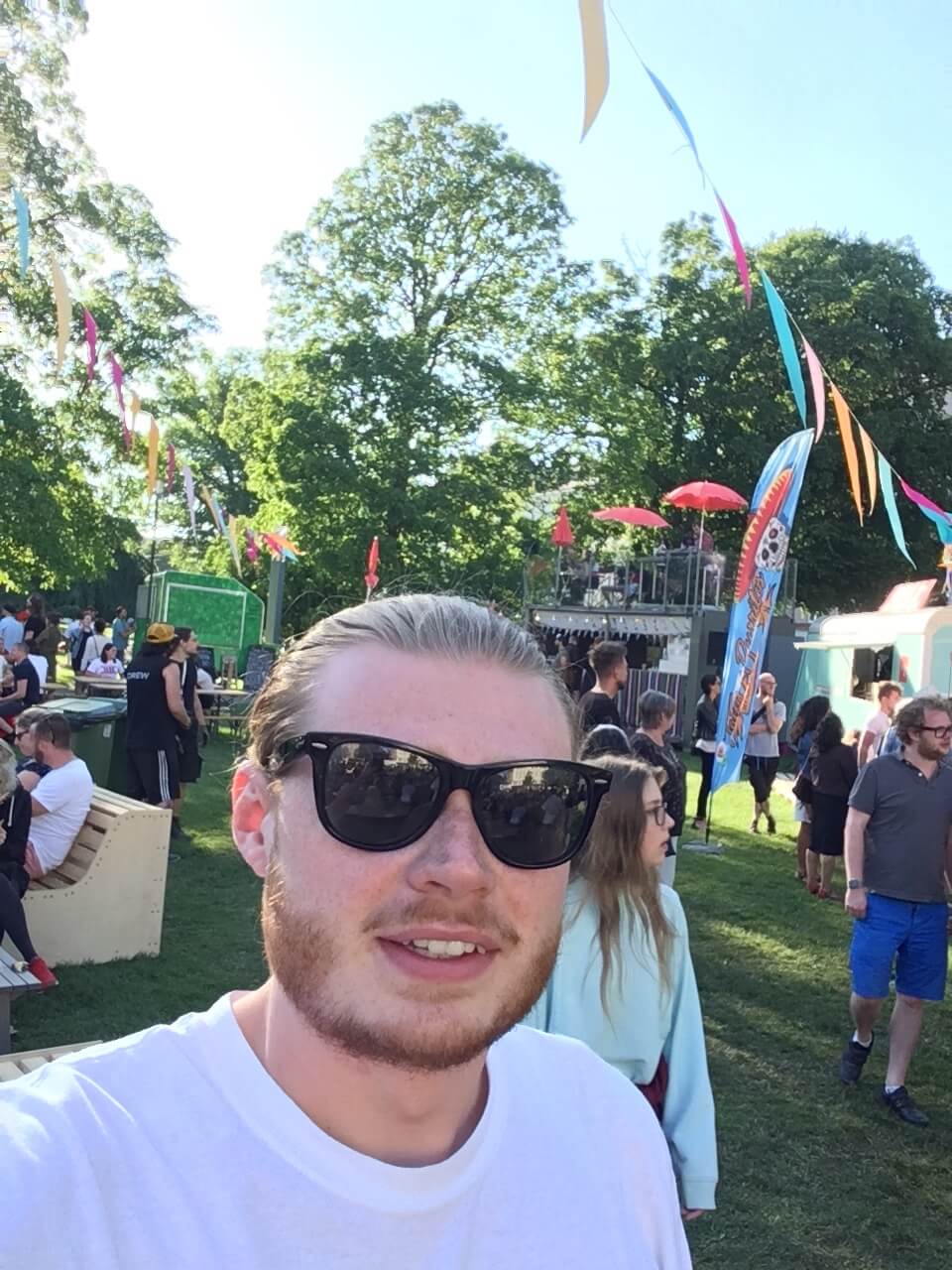
Festival attendees relax in the shade during a summer park festival. It is a time to drink and be merry!
Below is a collection of photographs I took as I traversed across Sweden. Each visual shows a different slice of life.
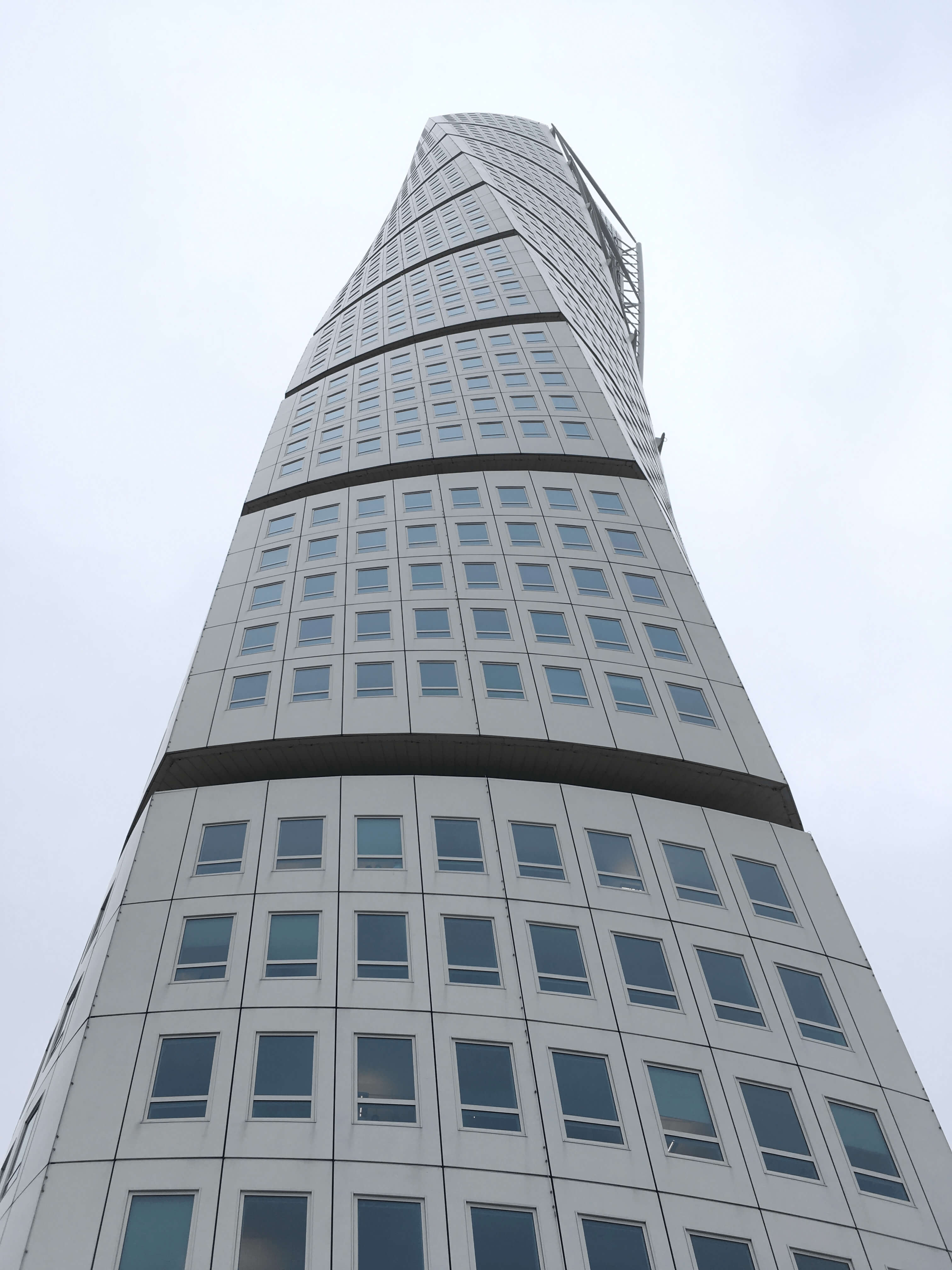
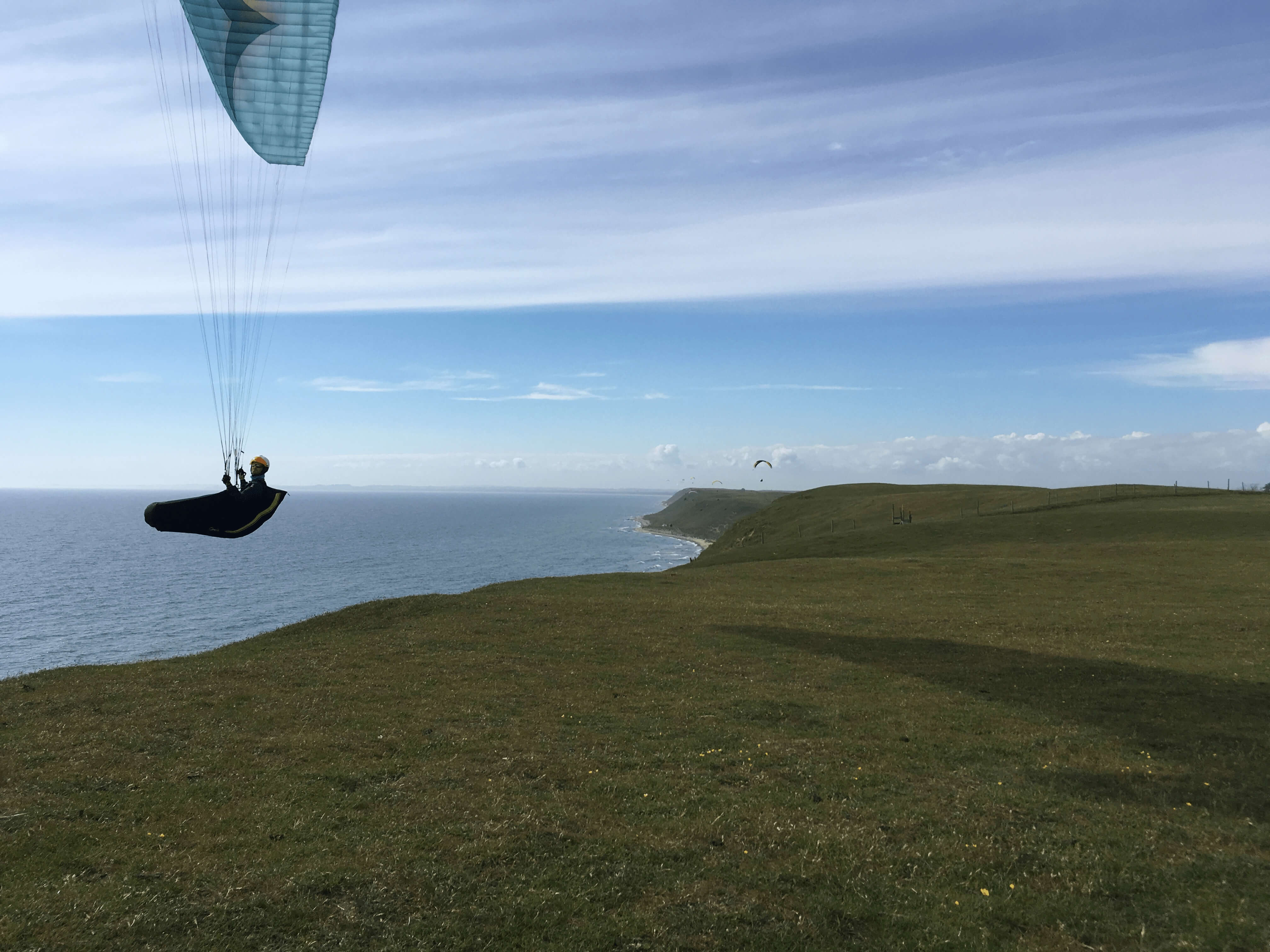

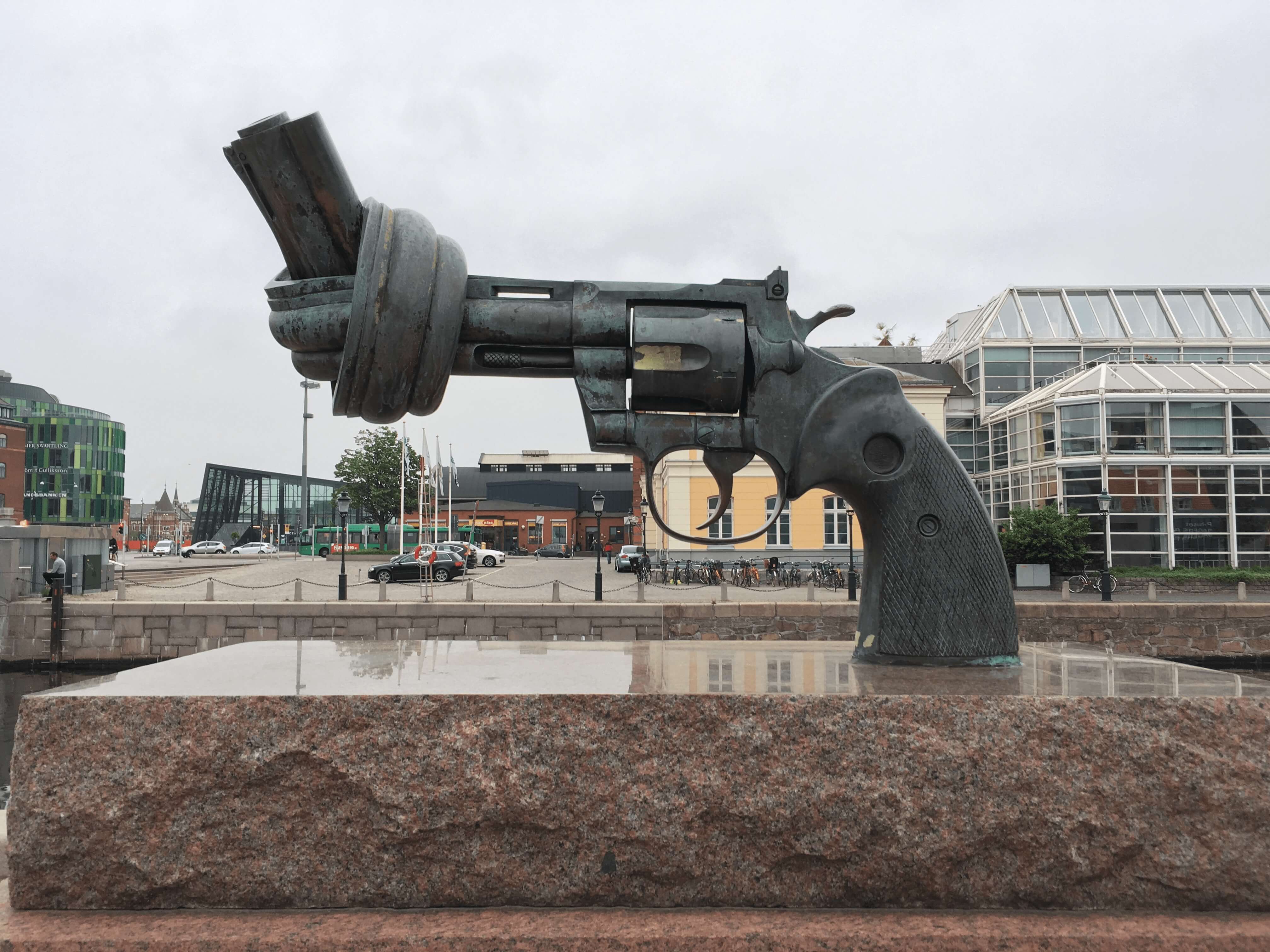

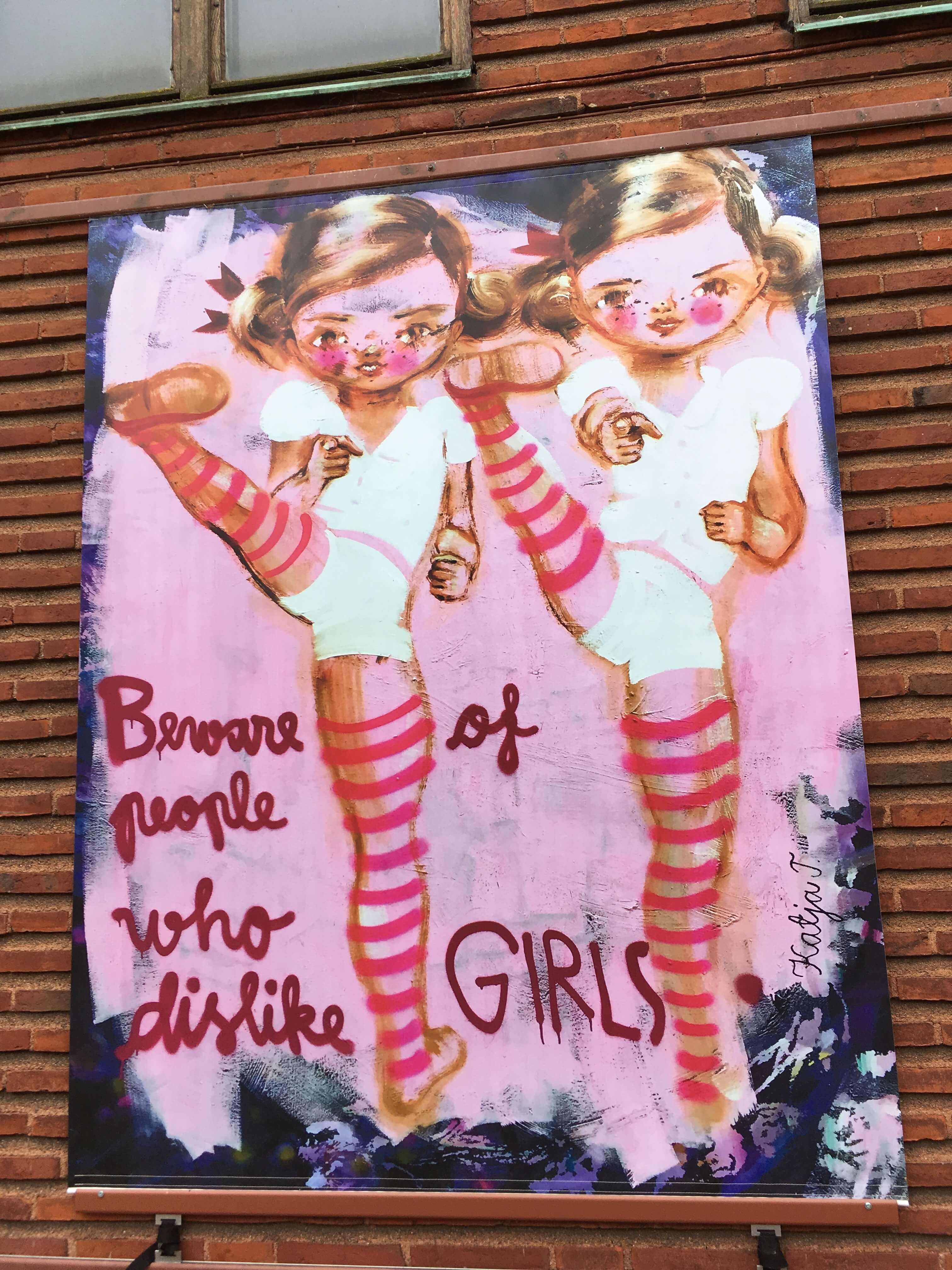
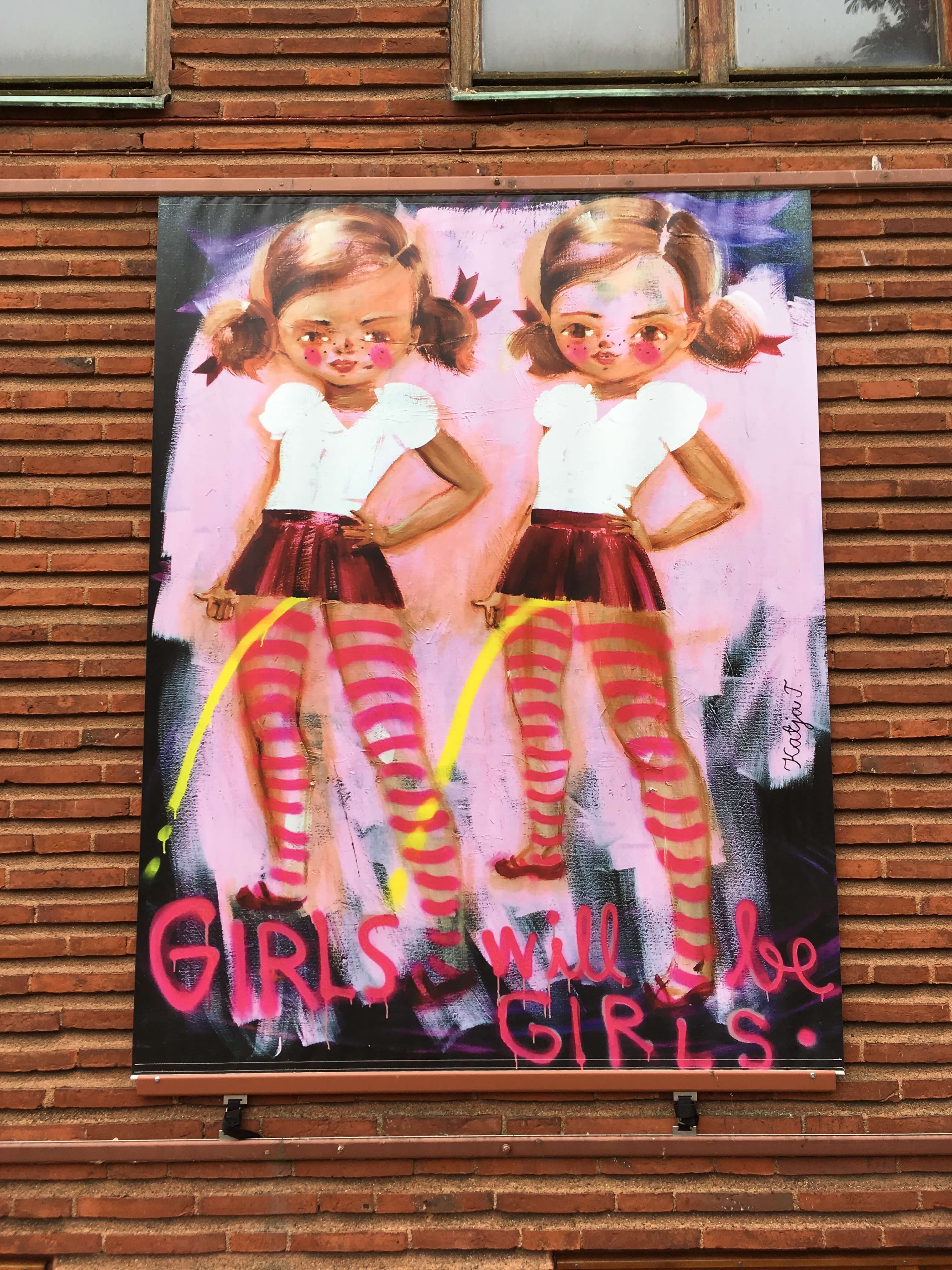
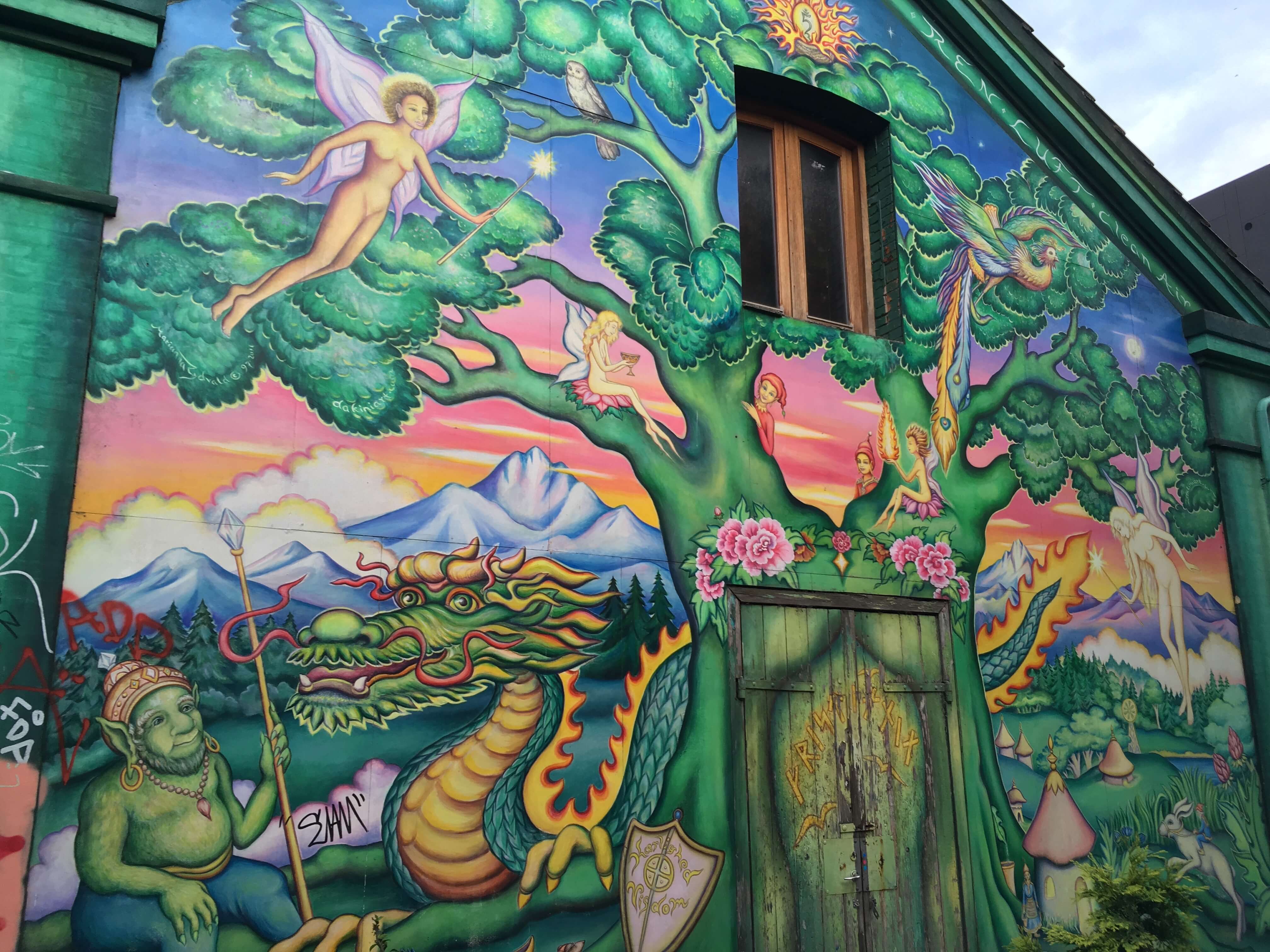
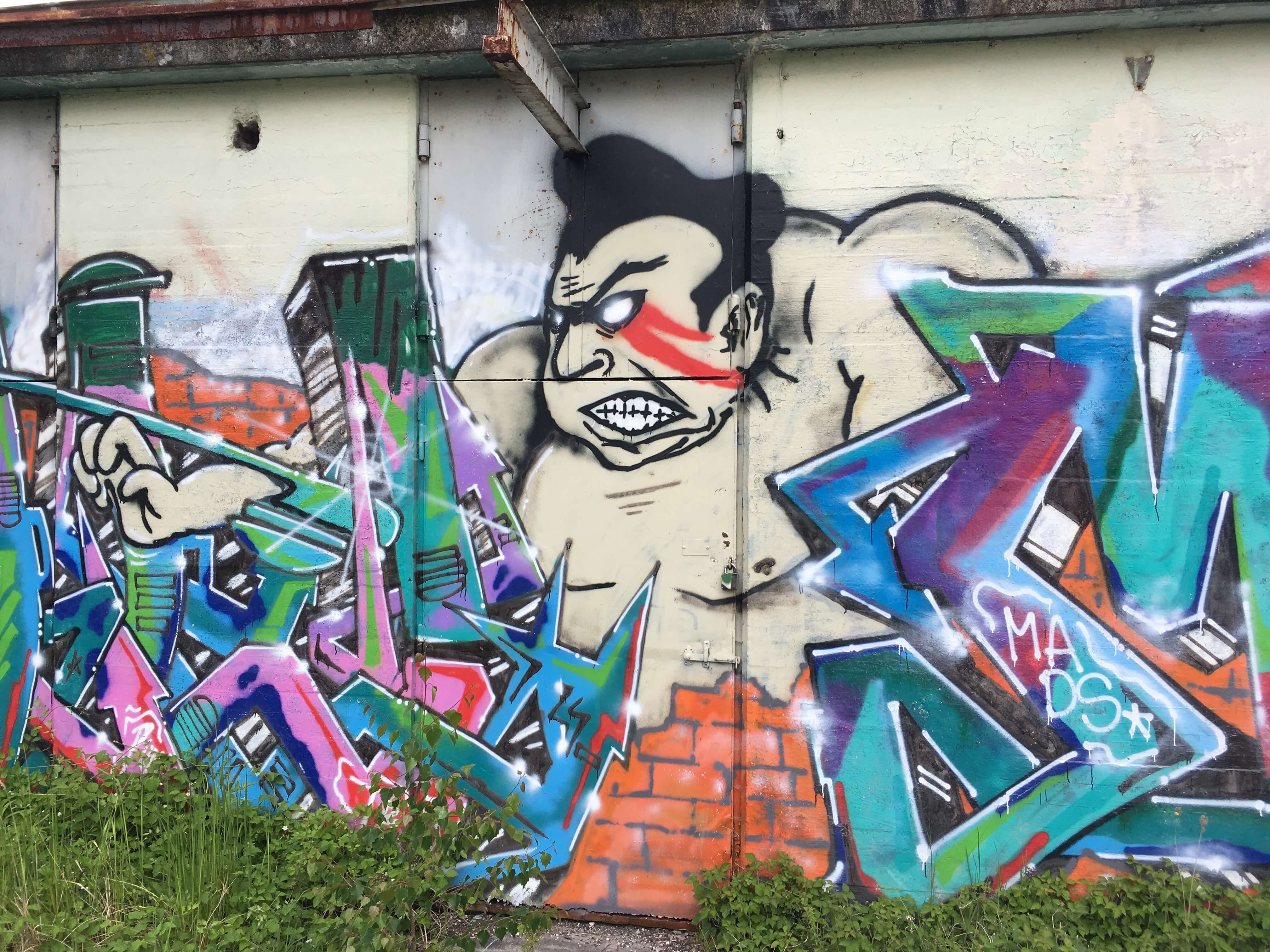
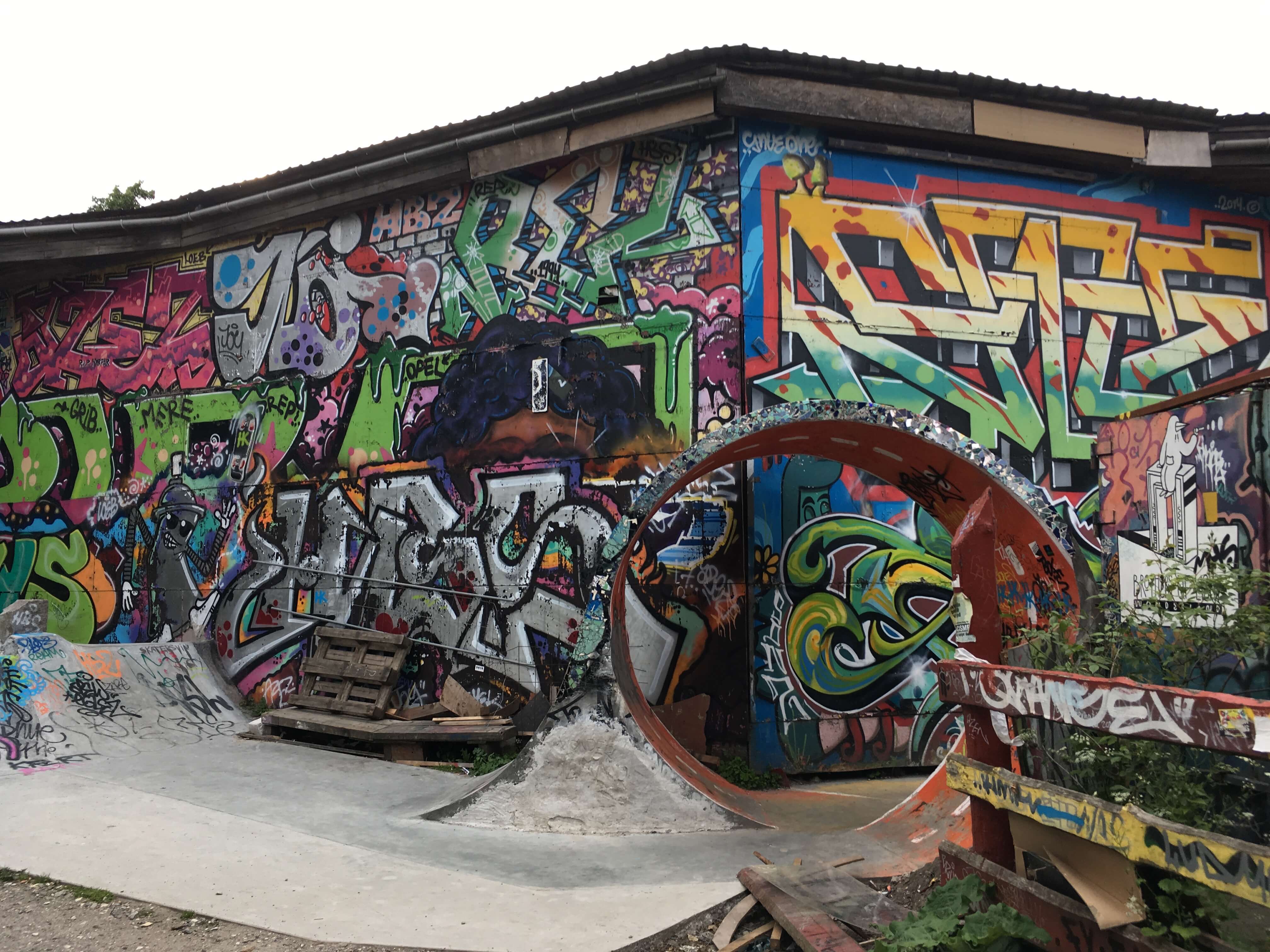

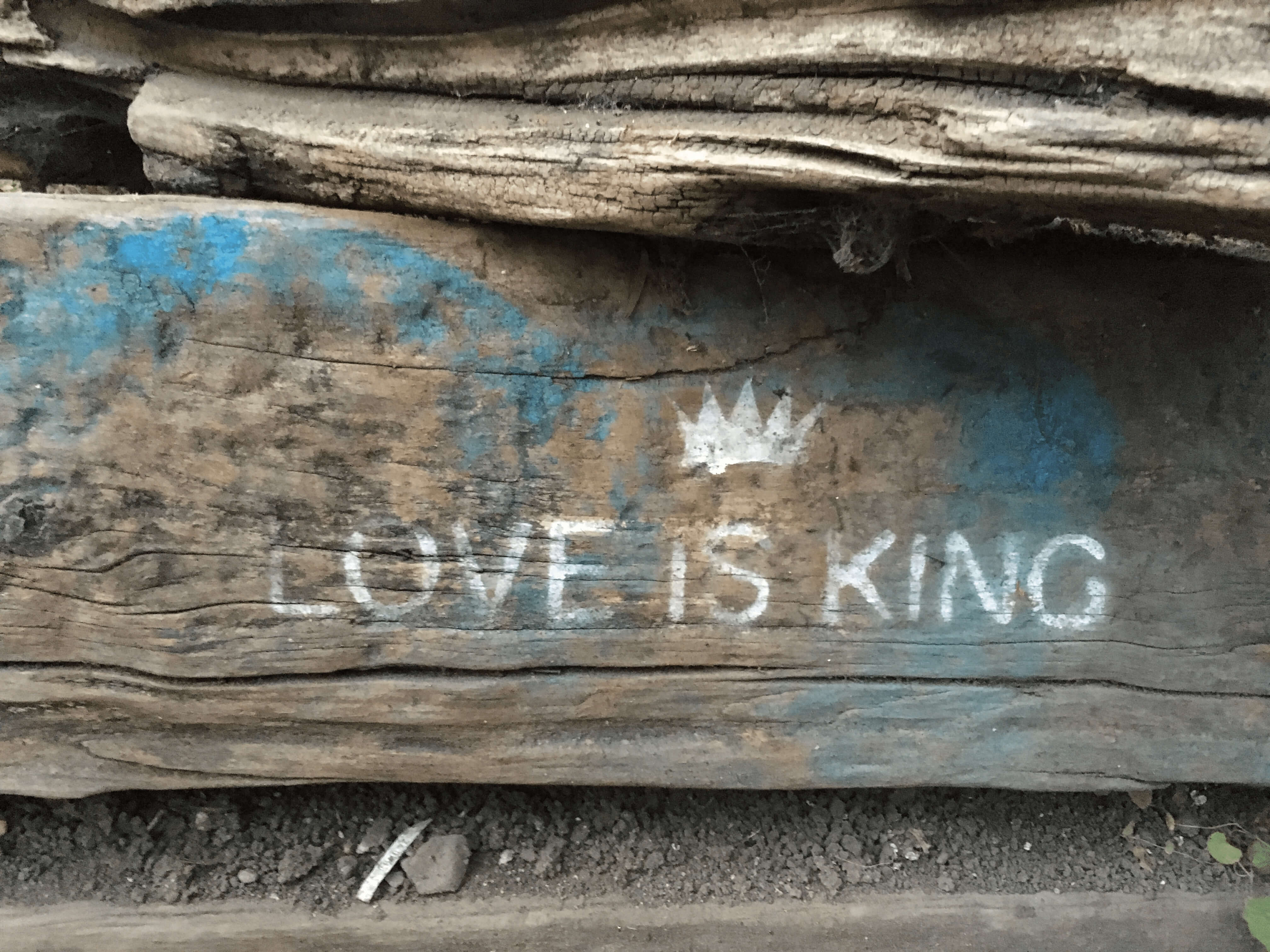
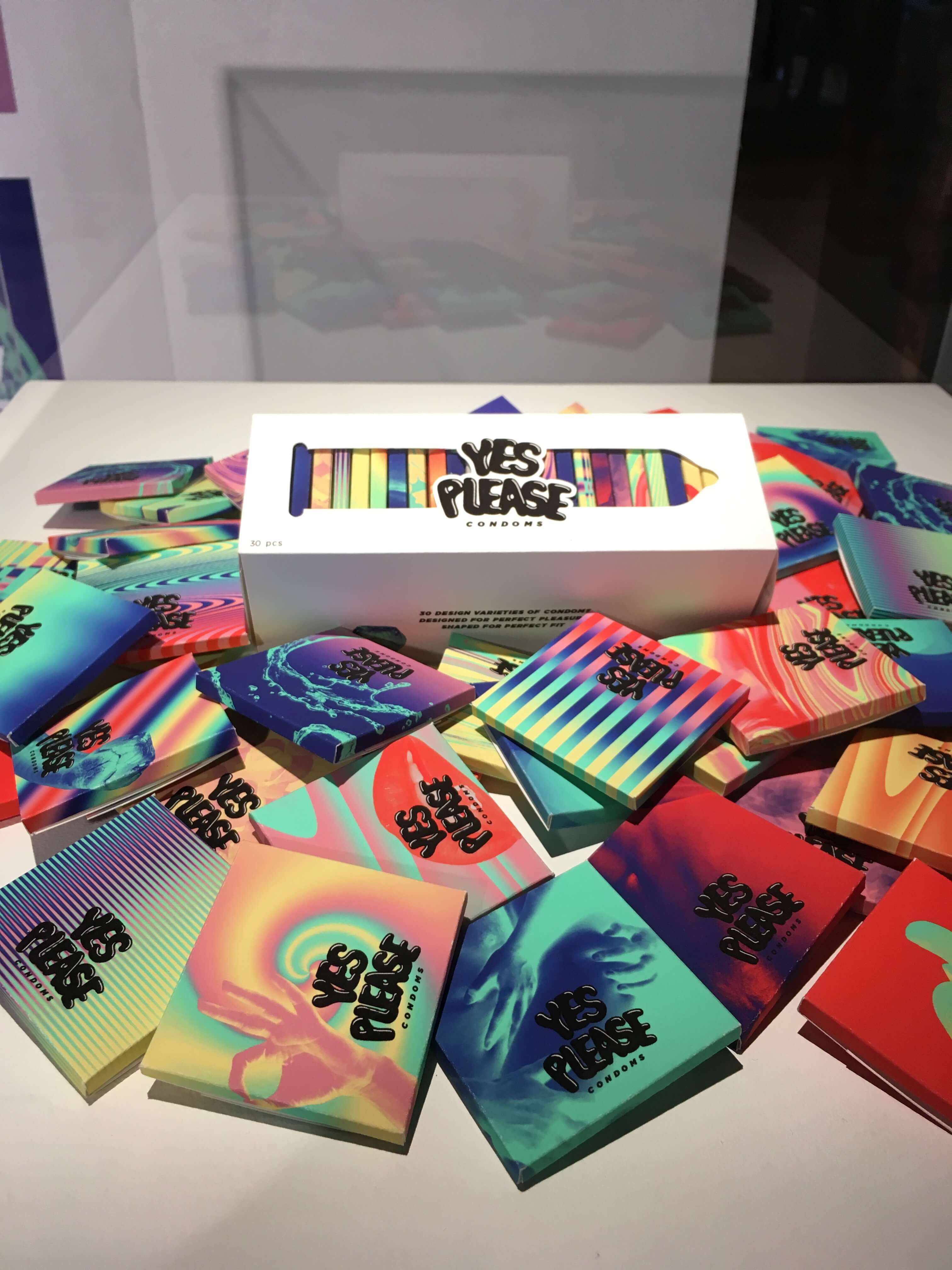
The various backgrounds of my photos highlight not only the architectural but societal aspects as well.
Natural sites have become infused with artistic installations. From professional pieces (such as "Imperfect Geometry For A Concrete Quarry") to amateur graffiti, each artwork is viewed in equal vision. The usual structures of civilization lie coated in creativity.
The visual features reflect the feelings of a collective. The feminist paintings spur from the women-led political party Feministiskt initiativ.
The pieces are bold, brash, and direct; it is very clear that feminism is a core principle in Malmö - unlike the United States.
The other politically motivated images, such as The twisted gun and the "Yes, Please" condoms, signify the progressive attitude
of societal norms. Their messages are meant to be concise and forceful, serving as a barrier for regressive opinions. The Scandanavian way of life
is a strong and liberal attitude - forged from a pure connection of humanity and the environment.
June 6th is the national day for Sweden when Karl Gustav Vasa defeated the Danes in 1523
to form what is now modern Sweden. It is the singular day of the year when all Swedes openly express such passionate
nationalism towards their country.
When I was in Malmö during the holiday I saw a great unfurling of flags across the city. Prior to this day such patriotism
was never visible - but today - the city was painted in blue and yellow. Residents clothed themselves in national colors,
the streets were coated in decorations, people passed out flags, music filled the air, and the entertainment was a spectacle!
In the center of Malmö, just outside the government building, an impressive stage was constructed! As I sat down to take in
the foreign holiday I was handed a program detailing the theatric festivities that awaited me. Juggling was the first on the bill...
The juggling was not the only confusing act of the day. Soon after a fashion show unfolded before me! It was a wild surprise of
electronic music and matching outfits. Each model walked across the stage with clothes that matched in color to the previous
model but with a totally different style. I was watching a constantly evolving outfit.
At the time I was confused by the acts. Where were the fireworks? The overflowing of alcohol? The ostentatious attire?
How was this a national holiday?
Upon reflection these acts are visual interpretations of the Malmö culture. The juggling and fashion shows were expressions of the
individual efforts in a collective work. It was a symbol of the bicyclists in the city, the street graffiti artists, the service
workers, and the ones growing green roofs - each contributing themselves to the betterment of community. It was a celebration of
their society.
Only a few days after the National Day Sweidsh senior students were celebrating the completion of their final year of
secondary eduction, known as "studenten". As Swedish rites of passage go, this one marking graduation is by far the most exuberant.
Students equipped with noise makers and confetti load into decorated trucks which then drive around the city blocks
like a parade. The graduates shout for joy from the trucks and cause a ruckus of activity! Passersby, like myself, stop and cheer
with the bright young ones.
The educational achievements are rejoiced among all - not just family members! Each student is the culmination
of hard work, determination, and the greater good. They are the embodiment of progress in Malmö.
Shortly after the celebrations I left Malmö to return to the states in what was a truly bittersweet moment. My time abroad
in Sweden was an eyeopening experience. I traveled to study a foreign way of life but what I discovered was an entirely new realm.
The explosion of visual culture in the close-knit city of Malmö was incredible!
The mix of traditional customs and contemporary actions form a nation that is ever-changing, ever-growing, and ever-expanding into new paradigms of
art, technology, and science. The city's culture was a mass spatial form of visuals. It could be seen on the streets, on the rooftops, in the alleys,
on water, in the air, and within the buildings.
Malmö offered me view unlike any I had seen in America - I felt such a strong connection to a city I had just met. I felt like a part of the collective
puzzle of daily life during my stay. Even as I biked down the cobblestone paths, merely taking in sights,
I felt like I was making an impact for the greater good of Malmö.
Since my journey I have been more conscious of my impacts in the environment and society. I am choosing to live a more sustainable and
cooperative lifestyle. Malmö demonstrated how a culture built on these values is the future for the world.
Though my journey abroad ended, this new adventure has just begun.